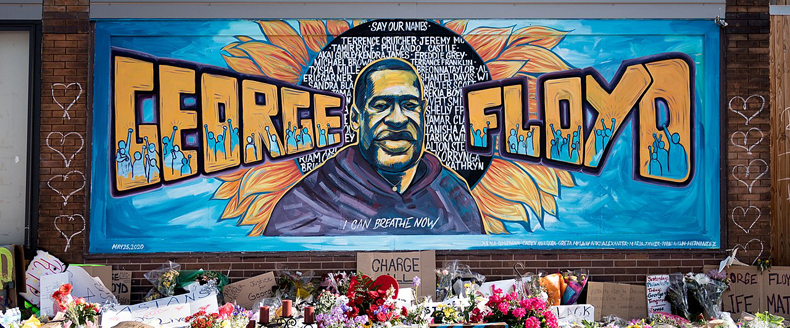Top photo: George Floyd memorial in Minneapolis. By by Lorie Shaull via via Wikipedia.
Despite a pandemic, Americans gathered in vast numbers over the past few weeks to protest the deaths of George Floyd and other people of color at the hands of police. Without social media, though, those streets would likely have been empty.
Social media sparked the protests. Without Facebook, Twitter, Instagram, TikTok and the cell phones in our pockets, Americans wouldn’t have known anything about suspicious deaths at the hands of police except through official reports we now know were fatally biased. Once protesters gathered, social tools kept them aware of where and when events were happening, often keeping them steps ahead of shield-wielding cops. But how did it work in practice?
In part, through a “distributed” model of organizing, in which people in the crowds shared information with each other and with supporters far afield, as I explored in Campaigns & Elections earlier this month. Facebook, Twitter and Instagram played a role, as would make sense considering their ubiquity in activists’ daily lives. Many protests in small-town America came together after a single person put up a Facebook post. But other platforms helped, including:
- Encrypted messaging apps such as Telegram and Signal
- The police-monitoring app Citizen, ironically once known as Vigilante
Just as interesting is how people put digital tools to work, including the K-pop fans who crashed a Dallas police app with spurious posts (good practice for their punking of Trump’s Tulsa rally). Disinformation and lies also spread, for instance drawing scores of gun-wielding “militia” members to confront a mythical Antifa attack in Idaho.
But despite any negatives, social and mobile media also took Americans inside the protests as they happened, countering narratives on Fox News and similar outlets that the largely peaceful events were dominated by violence (weeks later, Fox was STILL using video of fires from early rioting). As Americans watched the video of George Floyd dying in the street, and as they saw the police shove, beat and tear-gas unarmed and unresisting protesters, official narratives began to wither in the public mind. Was police reform actually possible?
What’s next? Real changes will likely have to wait until a Biden presidency, but the sentiments behind Black Lives Matter aren’t going away. Instead, they’re going global. For more, read the full article. And hope for a more democratic — and equal — future for us all.
– cpd

